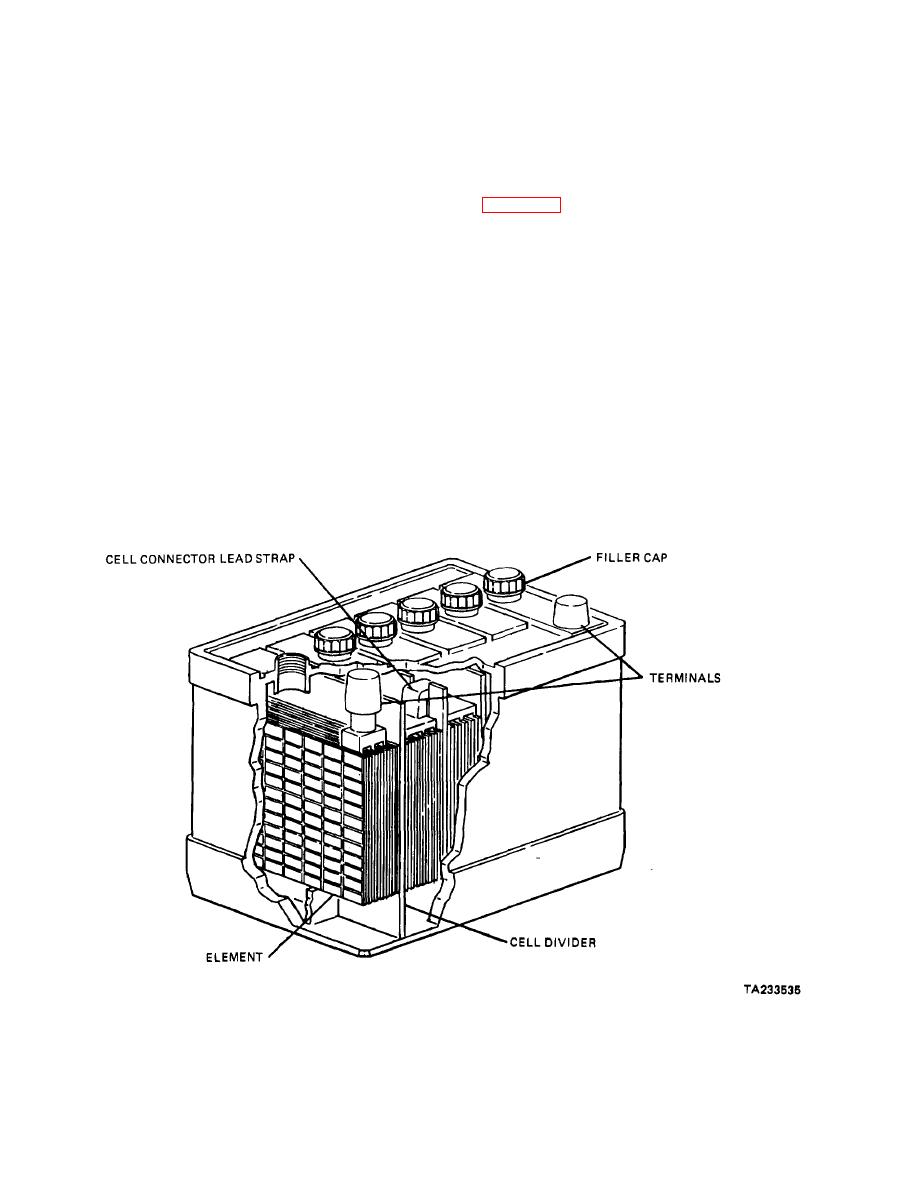
| Tweet |

Custom Search
|
|

|
||
 TM 9-8000
CHAPTER 12
BATERIES
Section I. CONSTRUCTION
volt battery.
Typical battery construction is shown in
12-1. General. The storage battery provides electrical
energy through chemical reactions. When a generator in
the electrical system of a motor vehicle produces more
a. Plates.
electrical energy than required for ignition and for
operating electrical accessories, the surplus (under cer-
(1) Each cell consists of a hard rubber jar or
tain conditions) passes through the battery to reverse the
compartment into which two kinds of lead plates, known
chemical reaction. This is known as charging the
as positive and negative, are placed. These plates are
battery. When the generator is not producing the
insulated from each other by suitable separators and are
necessary electrical energy, the battery, through
submerged in a sulfuric acid solution.
chemical reaction, can supply the energy required in the
electrical system of the vehicle. The battery then is said
(2) The backbone of both the positive and
to be discharging. The most common battery for
negative plates is a grid made of stiff lead alloy casting.
automotive use is the lead-acid battery.
The grid, usually composed of vertical and horizontal
crossmembers, is designed carefully to give the plates
12-2. Component Parts. The storage battery, as
mechanical strength and, at the same time, to provide
used for starting, lighting, and ignition purposes, consists
adequate conductivity for the electric current created by
of three or more cells, depending on the voltage desired.
the chemical action. The active material, composed
A battery of three cells (2 volts each) connected in series
chiefly of
is a 6-volt
battery, and one of six cells connected in series is a 12-
TA233535
Figure 12-1. Cross Section of a Typical Storage Battery.
12-1
|
||
 |
||